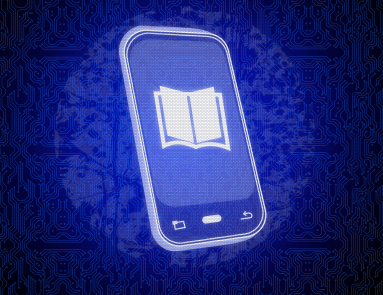Planning and Managing Distance Education Systems: Software Systems
Dr. Farhad (Fred) Saba
Founder and Editor, Distance-Educator.com
Basic characteristics– These systems consist of the array of computer programs that are needed for teaching, learning, research and administrative affairs. Instructors have an increasing number of choices at their fingertips to connect with learners through audio, video and text communication. The variety of communication software for teaching and learning purposes ranges from email to more complex programs, such as, learning management systems, and social media, as well as a class of software ![]() applications, such as, Adobe Connect that provide real time multipoint communication by voice, video and text to users. In recent years, software has also included the vast repositories of journal articles and digital books or eBooks.
applications, such as, Adobe Connect that provide real time multipoint communication by voice, video and text to users. In recent years, software has also included the vast repositories of journal articles and digital books or eBooks.
Key Personnel– In addition to faculty who have been responsible for either creating their instructional materials or selecting textbooks and other media materials, professionals who work at this system level include librarians, as well as writers, editors, videographers, software engineers, programmers, producers, directors, actors, graphic artists, and audio and video engineers. 
As libraries are gradually becoming digital, librarians have not only kept their traditional role in guiding students and faculty to find the information they need, they also have become the key personnel in implementing the massive transformation of analog libraries to digital entities.
Since the development of software systems have become inexpensive and are readily available on the Internet, students have also joined the ranks of instructional media developers by developing a range of martials from wikis to blogs, to fully developed Websites. As such, the line between the producer and consumer has become increasingly blurred in software developed for educational purposes.
Impact on Other System Levels– Adaptive Learning Systems– Perhaps the most important software innovation in recent years, which will have an immense impact on how teaching and learning will be conducted in the future, is the advent of adaptive learning systems. These class of software acquire data (learn) as the learner interacts with the learning materials, and depending on his or her input provide differential responses to each individual learner. An example of this class of software is the intelligent tutoring systems that are currently in use by the military, as well as some K-12 schools, universities, and businesses.
Quantum Simulations‘ The Quantum Tutors provide unlimited one-on-one tutoring over the Internet when an instructor isn’t available to help or answer questions. Just like working with a real-life tutor, students can ask questions, view next steps and request hints related to their own problems. Because of the “Enter Own Problem” feature, the software is compatible with any curriculum and requires no change to existing lesson plans, textbooks or homework assignments.
Policy makers and educators alike are poised to replace seat time to a result oriented system of funding for education. Self adaptive learning systems will facilitate this sea change at the Instructional, Educational and Societal Systems levels in this model.
The DreamBox adaptive online learning environment ensures that students work in their optimal learning zone. It recognizes more than just their ‘yes’ or ‘no’ answers—with every click of the mouse, it evaluates student strategies and immediately adjusts the lesson. Dreambox can adapt the level of difficulty, scaffolding, sequencing, and the number of hints, the pacing—all in real-time—allowing students of all levels to progress at a pace that suits them.
These are but two examples of adaptive learning systems that will enable learners to move at their own pace and eventually will result in a shift in how education is funded. Increasingly seat time as the most important indicator of “learning” is becoming under scrutiny. Policy makers and educators alike are poised to replace seat time to a result oriented system of funding for education. Self adaptive learning systems will facilitate this sea change at the Instructional, Educational and Societal Systems levels in this model.
Digital Information- The increasing availability of academic and research information in digital format has had a major impact on how libraries support students and faculty, and how major publishers provide textbooks. There is also an increasing variety of materials available to academic institutions on the Internet ranging from services, such as YouTube, SlideShare, and Ted Education that hold vast numbers of video clips to slide presentations, animations and other forms of educational information representation such as virtual laboratories or simulated environments.
On April 18-19, 2013, the Digital Public Library of America (DPLA) will celebrate the groundbreaking work of hundreds of librarians, innovators, and other dedicated volunteers in our collective effort to build the first national digital library.
Instructional information repositories, such as, Multimedia Educational Resource (MERLOT) for Learning and Online Teaching offer peer reviewed learning materials which along with other services, such as, Educational Resources Information Center (ERIC) have already redefined how courses are structured and how learners conduct their “library” search for completing their assignments. The revolution in software systems has created the potential for faculty to create their own instructional materials and not only write a textbook, but publish it too, thus by passing publishers. Students will be the direct beneficiary of this change, as for years they have been complaining about the cost of textbooks. Supplanting publishers have also extended to the area of scholarly journal publishing. Similar to textbooks, faculty can publish their articles directly on the World Wide Web. This has given rise to the number of open access journals. As of this writing, the Directory of Open Access Journal (http://www.doaj.org/) listed 8366 publications from 121 countries. Faculty are increasingly motivated to contribute to open source journals while traditional publishers receive faculty contributions to print-based journals free of charge, and sell them in the published format to university libraries often with very expensive annual subscription rates.
 These developments have started a major process of change in the publishing industry as traditional book publishers are creating new business models and products to stay in business. In an article titled The Object Formerly Known as Textbook Jeffry Young wrote in the Chronicle of Higher Education:
These developments have started a major process of change in the publishing industry as traditional book publishers are creating new business models and products to stay in business. In an article titled The Object Formerly Known as Textbook Jeffry Young wrote in the Chronicle of Higher Education:
Textbook publishers argue that their newest digital products shouldn’t even be called “textbooks.” They’re really software programs built to deliver a mix of text, videos, and homework assignments. But delivering them is just the beginning. No old-school textbook was able to be customized for each student in the classroom. The books never graded the homework. And while they contain sample exam questions, they couldn’t administer the test themselves.
Open Education– New software technologies have also been the impetus behind the open educational resource (OER) movement, which aspires to provide such information to everyone free of charge. A much talked about form of OER has been massive open online courses (MOOC). Spearheaded by major elite institutions, such as MIT, and Stanford University MOOCs are available free of charge for those who wish to take them. However, in most cases students do not receive credit for their attending or completing a course. Yet entrepreneurs are experimenting with testing students in proctored exams and offering them credit. Such innovations in software systems are bound to grow in the future, and reshape how learners access educational opportunities. It is certain that in the next few years, more novel approaches to offering instructional and learning materials will be introduced on the Internet, further challenging the current model of on-campus education.








